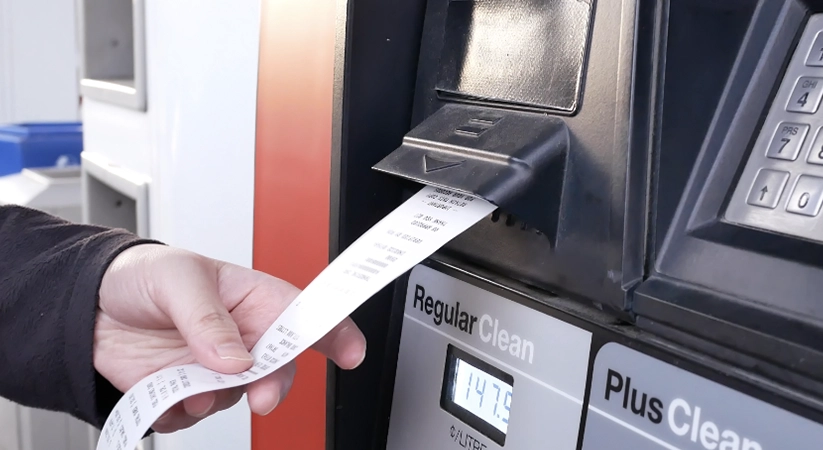
This is where the term “Your mileage may vary” comes in.
The IRS mileage rate, also known as the standard mileage rate, is the rate set by the Internal Revenue Service (IRS) that taxpayers can use to calculate their deductible costs for operating an automobile for business, medical, or charitable purposes.
The rate is an amount per mile that can be claimed for tax purposes to offset the costs of using a personal vehicle for approved purposes. It is updated annually and is determined based on the average variable costs of operating an automobile for the year.
The IRS updates its standard mileage rates annually, typically at the beginning of each year on January 1st. These mileage rates reflect the average costs of owning and operating an automobile in the US, including fuel prices, insurance, maintenance, and wear and tear. However, there are instances when the IRS may not update the mileage rates, particularly if the costs associated with owning and operating motor vehicles have not significantly changed within the previous year. For instance, in 2021, the IRS did not revise the standard mileage rates, following the drop in mileage due to the COVID-19 pandemic.
As of January 1, 2023, the standard mileage rates are:
- 65.5 cents per mile for business use
- 22 cents per mile driven for medical or moving purposes for qualified active duty Armed Forces members
- 14 cents per mile driven in service of charitable organizations
These rates are a little different than the 2022 mileage rates. The business use rate is up by 3 cents. The medical and moving mileage rates were raised in the last half of 2022, and the 2023 rate keeps it steady. The only rate that didn’t change since January 2022 was the charitable organization mileage rate.
Standard Mileage Rates Versus Actual Expense Method
When calculating vehicle-related expenses for tax purposes, individuals and businesses can use either the standard mileage rate method or the actual expense method. Understanding the differences between these two methods and when to use each one is crucial in accurately calculating deductions and reimbursements. In this article, we’ll delve into the various aspects of the Standard Mileage Rates versus Actual Expense Method to help you make an informed decision.
What Is Required When Using The Standard Mileage Rate Method?
The standard mileage rate method is a popular choice for taxpayers who want to deduct their vehicle expenses for business, medical, charitable, or moving purposes. However, to use this method, taxpayers must follow certain requirements.
One of the most crucial requirements is to choose the standard mileage rate method in the first year of the vehicle’s use for business or the qualifying purpose (medical, charitable, or moving purposes). Once the taxpayer has selected this method, they cannot switch to the actual expense method in the future.
Taxpayers should also maintain a detailed record of their business travel, including the date, purpose, and mileage. It is imperative to keep proof of their expenses, such as gas, oil changes, and repairs, in case an IRS audit occurs. A mileage logbook or a mileage logging app is an effective way to record this information.
Moreover, it is essential to calculate the actual expenses of a vehicle to ensure that using the standard mileage rate method is the most beneficial. Taxpayers can decide which method to use based on whichever is more tax-efficient for them.
The current standard mileage rates vary depending on the type of expense and how much the taxpayer drives.
What is the Difference Between Standard Mileage Rates and Actual Expense Method?
When it comes to claiming deductions for the use of a personal vehicle for business, medical, or charitable purposes, taxpayers have two options: the Standard Mileage Rate and the Actual Expense Method. Both methods have their pros and cons, and taxpayers should choose the one that best suits their needs.
The Standard Mileage Rate is the default cost per mile that taxpayers can claim for their qualified vehicle use. The rate varies depending on the intended use of the vehicle and changes from year to year. For example, in 2021, the standard mileage rate for business use is 56 cents per mile driven, while the rate for medical and moving purposes is 16 cents per mile driven. For charitable organizations, the rate is set by statute and is currently 14 cents per mile driven.
The advantage of using the Standard Mileage Rate is that it is simple and easy to use. Taxpayers only need to keep track of their business mileage and multiply it by the standard mileage rate to calculate their deduction. However, the Standard Mileage Rate does not account for all the costs associated with vehicle use, such as gas, insurance, registration fees, and repairs.
On the other hand, the Actual Expense Method allows taxpayers to claim the actual costs they incurred while using their vehicle for business, medical, or charitable purposes. In addition to gas, insurance, and registration fees, taxpayers can also claim repairs, maintenance, and depreciation. To use this method, taxpayers need to keep accurate records of all their vehicle expenses and calculate the percentage of the total expenses used for qualified purposes.
The advantage of using the Actual Expense Method is that it can result in a higher deduction than the Standard Mileage Rate, especially for taxpayers who drive an expensive or heavily-used vehicle. However, the Actual Expense Method can be more complicated and time-consuming to use, requiring taxpayers to keep detailed records and receipts of all their expenses.
It’s important to note that if taxpayers choose to use the Actual Expense Method in the first year they use their vehicle, they cannot switch to the Standard Mileage Rate method in future years. Therefore, taxpayers should carefully consider their options before making their choice.
What Is The Advantage Of Using The Standard Mileage Rates Method?
If you’re a taxpayer who uses a personal vehicle for business purposes, the Standard Mileage Rates method can be a cost-effective and time-saving way to deduct your vehicle expenses. Here are some notable advantages to consider:
One of the most significant advantages of the Standard Mileage Rates method is its simplicity. Taxpayers can quickly calculate their vehicle deduction by multiplying the number of miles driven for qualified purposes by the applicable standard mileage rate. This method eliminates the need for detailed record-keeping and simplifies the deduction filing process.
Using the standard mileage rates method also covers depreciation and lease payments up to certain limits. If you’re leasing a vehicle or own a new vehicle, this method can help you deduct the costs without worrying about keeping track of actual expenses.
Another benefit of using the Standard Mileage Rates method is that taxpayers don’t have to worry about fixed costs, such as insurance or repairs. This is because the standard mileage rate includes these costs, allowing taxpayers to maximize deductions without worrying about these additional expenses.
Qualifying business purposes that the standard mileage rate method covers include travel to meet or network with clients, driving between work locations, delivery services, and other similar work-related activities. Using the standard mileage rate method for these kinds of qualifying activities can help taxpayers save time and money.
Additionally, utilizing an automatic mileage tracker app can further add to the advantages of using the Standard Mileage Rates method. These apps can automatically log mileage and provide real-time tracking, reducing the margin for errors and saving time on record-keeping.
What Are Some Examples of Qualifying Business Purposes for the Standard Mileage Rate Method?
The Standard Mileage Rates method is a beneficial option for taxpayers who want to simplify the process of calculating their vehicle deductions. If you’re utilizing this method, there are several qualifying business purposes that you can use to maximize your deductions. These purposes are defined by the IRS rules and regulations.
Some examples of qualifying business purposes include driving to meet clients, visiting suppliers, running business errands, and attending business meetings. If you’re a sales representative or a business owner, you can use this method to deduct the mileage you drive to meet potential or existing clients. Similarly, if you’re visiting your suppliers for business purposes, you can use the standard mileage rate method to calculate your deductions.
Running business errands such as picking up supplies, making bank deposits, and mailing packages are also qualifying business purposes. These activities are necessary for the operation of your business, and the standard mileage rate method can help you maximize your deductions without worrying about record-keeping.
Attending business meetings, conferences, or seminars also qualify for the business mileage rate. The mileage you drive to attend these events can be claimed using the standard mileage rate method for 65.5 cents per mile for business purposes, reducing the tax burden on your business.
However, it’s essential to remember that commuting to and from work is not considered a business expense and is not deductible. Any mileage you drive for personal purposes also cannot be claimed under the standard mileage rate method.
To sum it up, qualifying business purposes for the standard mileage rate method include driving to meet clients, visiting suppliers, running business errands, and attending business meetings. Keeping track of these mileage records can help you save time and money on your tax returns.
Business Reimbursement
Business reimbursement is an essential part of any company’s operations. It helps to ensure that employees are appropriately compensated for expenses related to work-related activities. One of the most common forms of business reimbursement is mileage reimbursement.
For employees who use their personal vehicle for business purposes, keeping a mileage logbook is essential to accurately track their driving activity. This logbook should include the date, start and end mileage, location, purpose of the trip, and any other relevant details. This information can be used to calculate the total mileage and the associated reimbursement amount.
In addition to mileage reimbursement, there are other expenses that may be eligible for reimbursement as well. These include parking fees, tolls, and other travel-related costs. It is important for companies to provide clear guidelines on what expenses are eligible for reimbursement and what documentation is required to verify those expenses.
For employers who provide company vehicles to their employees, a clear policy on personal use of those vehicles is essential. Employees should be informed of any restrictions or limitations on personal use and should be required to track their mileage for business and personal use. This information can be used to calculate any taxable income related to personal use of a company vehicle.
The federal mileage rates for charity, moving and medical
The IRS has set specific federal mileage rates for different purposes, including charitable, medical, and moving expenses. If you use your personal vehicle for these types of purposes, you could potentially receive a tax deduction based on the mileage rate set by the IRS. It is important to note that in order to deduct mileage for charity, medical, or moving expenses, you must meet certain requirements and itemize your taxes. Additionally, the mileage must be documented and tracked using a mileage logbook with the date, start and end mileage, location, and purpose of the trip.
Overall, understanding the federal mileage rates for different purposes is an important aspect of managing your personal finances and ensuring that you receive any eligible tax deductions.
Mileage reimbursement is a payment given to employees to compensate them for the use of their personal vehicle in conducting business-related travel. This compensation is considered to be a non-taxable reimbursement as long as the amount given does not exceed the standard mileage rate set by the Internal Revenue Service (IRS).
However, under certain circumstances, mileage reimbursement is considered taxable income and must be reported by the employee on their tax return. This happens when the amount of the reimbursement exceeds the IRS standard mileage rate, or if the reimbursement is greater than the actual cost of business-related travel.
For example, if an employee receives a mileage reimbursement of 60 cents per mile for business-related travel, but the IRS standard mileage rate is only 56 cents per mile, the extra 4 cents per mile would be considered taxable income. Similarly, if the reimbursement amount is greater than the actual cost of the employee’s business-related travel, the excess amount would also be considered taxable income.
It is important to note that only the excess amount is taxable and must be reported on the employee’s tax return. To report the amount on their tax return, employees should include it as part of their wages on their W-2 form.
What is “commuting rule” exception?
The “commuting rule” exception is an important concept that employees need to understand to be eligible for a tax-free reimbursement for their work-related travel. This exception is provided by the IRS and allows employees to be reimbursed for certain types of travel without incurring any tax liability.
The eligibility criteria for the commuting rule is that the travel must be considered work-related travel. This means that the travel must be necessary for the employee’s job and benefit the employer. Examples of work-related travel include travel between job sites, travel to meet with clients or customers, and travel to attend business meetings or conferences.
It is important to note that personal travel, such as commuting to and from work, is not eligible for mileage reimbursement under the commuting rule. This means that any miles traveled for personal reasons, such as travel from the employee’s home to their regular place of work, cannot be claimed for reimbursement.
To make a claim for tax-free reimbursement under the commuting rule, employees should keep detailed records of their work-related travel, including the date, destination, purpose, and mileage traveled. Additionally, employees must submit an accurate and complete mileage log or expense report to their employer in order to be eligible for reimbursement.
Types of mileage rates
Charity expenses
Charitable organizations help those in need, promote social welfare, and protect the environment. However, running a charitable organization comes with considerable expenses. Fortunately, certain expenses incurred for charitable purposes qualify for tax deductions, reducing the organization’s taxable income.
One of the deductible costs for charitable organizations is mileage. When an individual uses their personal vehicle for charitable purposes, they can deduct the actual cost of gas, oil, and other expenses related to the use of their vehicle or use the IRS standard mileage rate.
To qualify for this deduction, the mileage must be exclusively for charitable purposes. Additionally, you need to keep track of your mileage using a mileage logbook or other equivalent documentation. When claiming this deduction, you can either submit your actual expenses or use the standard mileage rate method.
Maintaining accurate records of mileage driven for charitable purposes is also essential. Your mileage logbook should include the date of travel, starting and ending locations, total miles driven, and the purpose of your trip. This information is critical when calculating your tax deductions, and failing to provide these details can lead to disqualification of your deduction by the IRS.
It is important to note that only unreimbursed mileage expenses are tax-deductible. If your charitable organization reimburses you for mileage, you cannot claim a deduction for that expense. However, if the reimbursement is less than the IRS standard mileage rate, you can claim the difference between your actual expenses and the reimbursement.
Medical expenses
When it comes to deducting medical expenses from taxable income, using a personal vehicle for medical purposes can also be included. It is essential to understand that the medical expenses you can deduct include the costs related to the structure or function of the body, diagnosis, prevention, and treatment of diseases.
However, it is important to take note of the AGI limit when claiming medical expenses. The medical rates for deduction are limited to the individual’s annual gross income (AGI), meaning that medical expenses are deductible only if they exceed 7.5% of the AGI.
Having said that, the cost of using a personal vehicle for medical purposes can be included in the list of expenses that can be deducted from your taxable income. The cost of gas, oil, and other expenses related to the use of the vehicle can be claimed on your tax return.
To make it easier for individuals to calculate their deductions, the IRS has set the federal mileage rate for medical purposes, which is currently set at 22 cents per mile driven. This rate is used to calculate the deductible costs of using a personal vehicle for medical purposes.
To be able to claim this deduction, you need to keep accurate records of your mileage driven for medical purposes in a mileage logbook or other equivalent documentation. Your mileage logbook should include the date of travel, starting and ending locations, total miles driven, and the purpose of your trip.
Moving expenses
Moving expenses can be a major financial burden for individuals and families. To offset these costs, the IRS allows taxpayers to deduct some of their moving expenses on their tax return if certain criteria are met. However, it is important to note that the rules for claiming moving expenses have changed considerably since the 2017 Tax Cut and Jobs Act.
Under current IRS guidelines, only active-duty military members are eligible to claim moving expenses related to permanent relocation due to military orders or if they are in a protective zone more than 100 miles from their home. In such cases, the expenses that are deductible include unreimbursed moving expenses for the active-duty member, their spouse, and dependents.

Jessie Seaman
Jessie Seaman, Esq. & EA, is a Florida attorney and IRS Enrolled Agent with over 12 years of experience in state and federal tax controversy resolution. Passionate about helping individuals and businesses navigate complex tax challenges, Jessie combines her legal expertise with a dedication to education, often mentoring future tax professionals and speaking at national conferences. A double major graduate from the University of South Florida and a Juris Doctor recipient from Florida Coastal School of Law, she has overseen tens of thousands of tax resolution cases, from simple privacy plans to high-profile matters. Jessie currently resides in Chicago, enjoying outdoor adventures with her Pomsky, Fisher.







